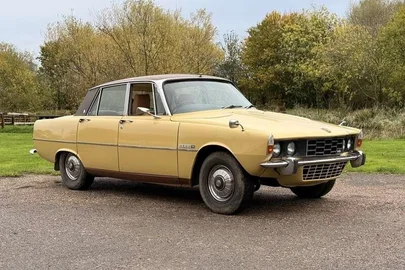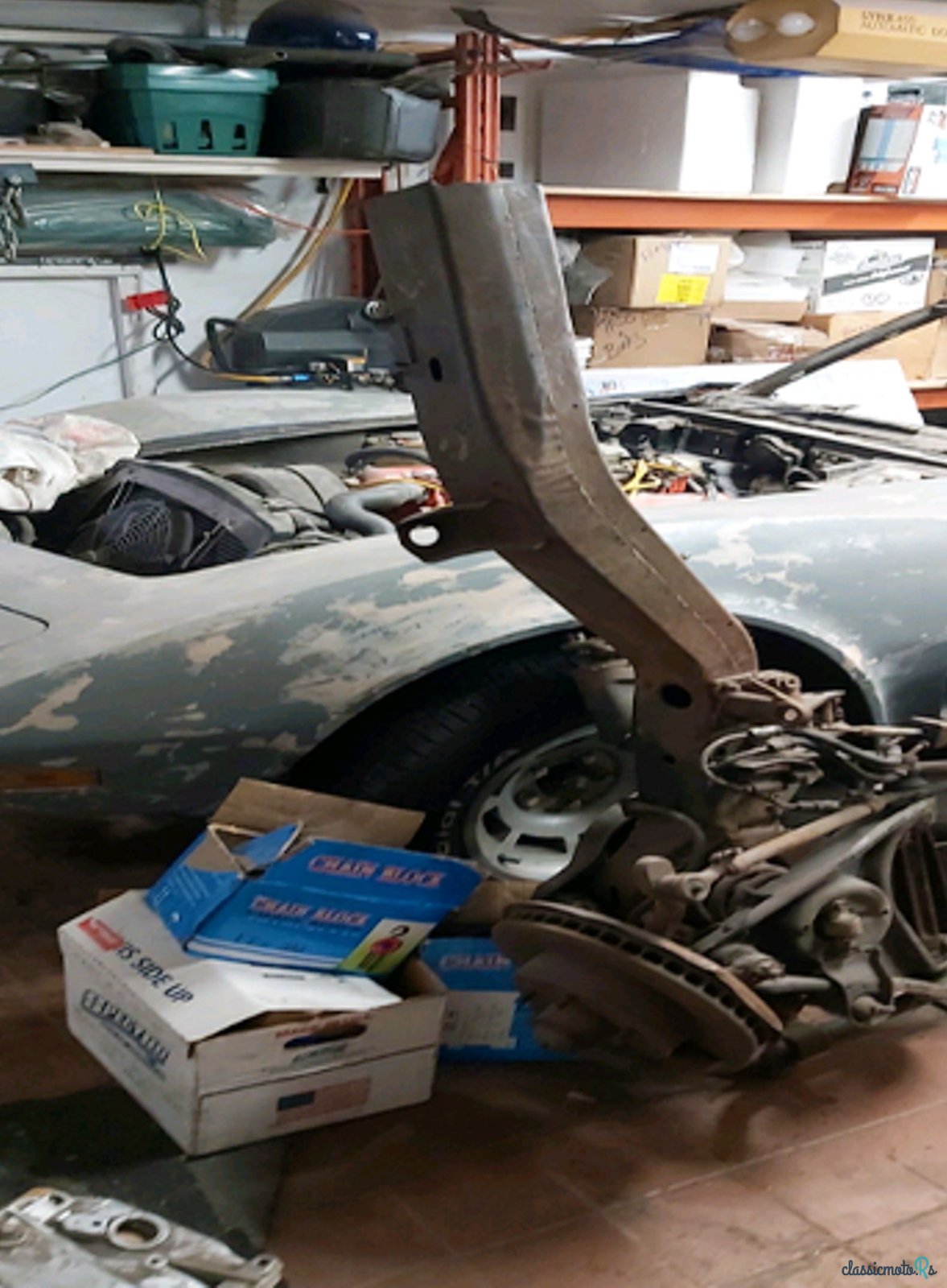
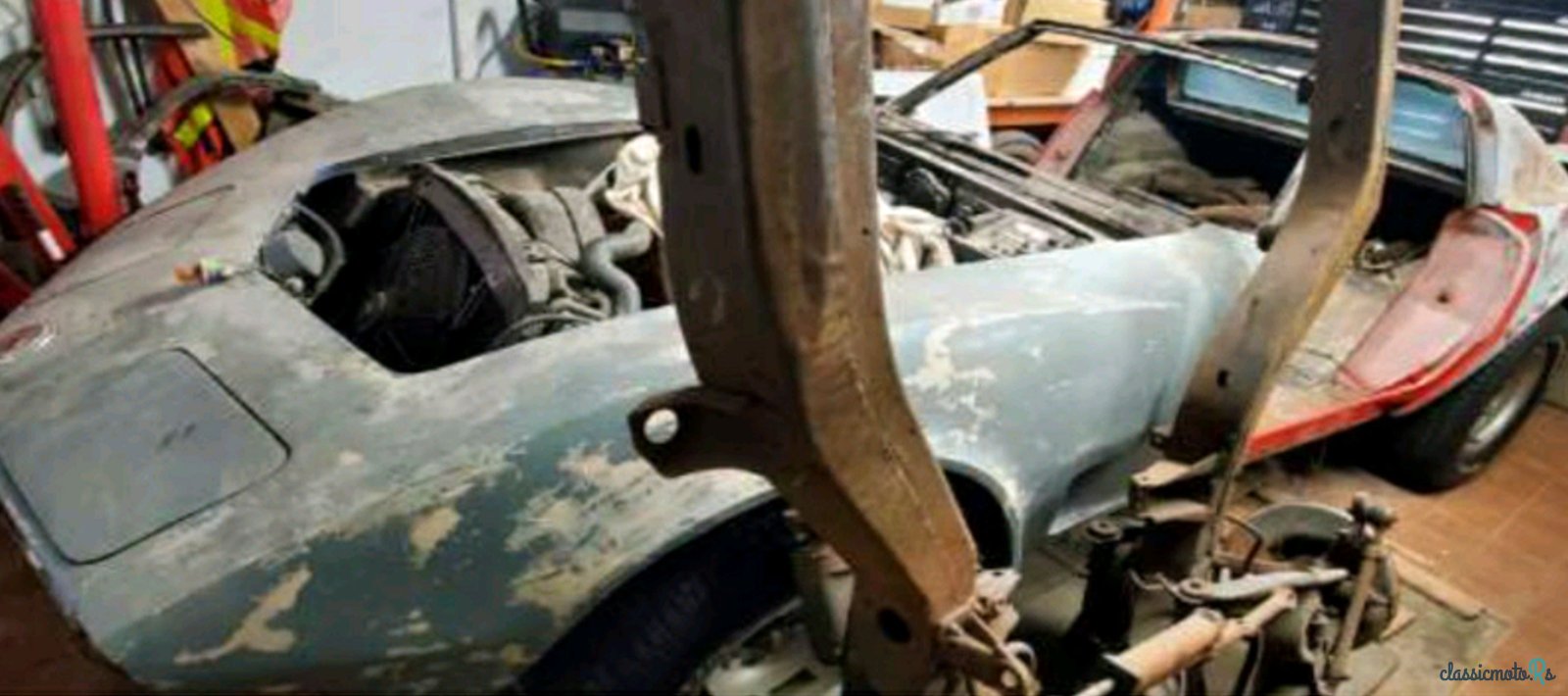
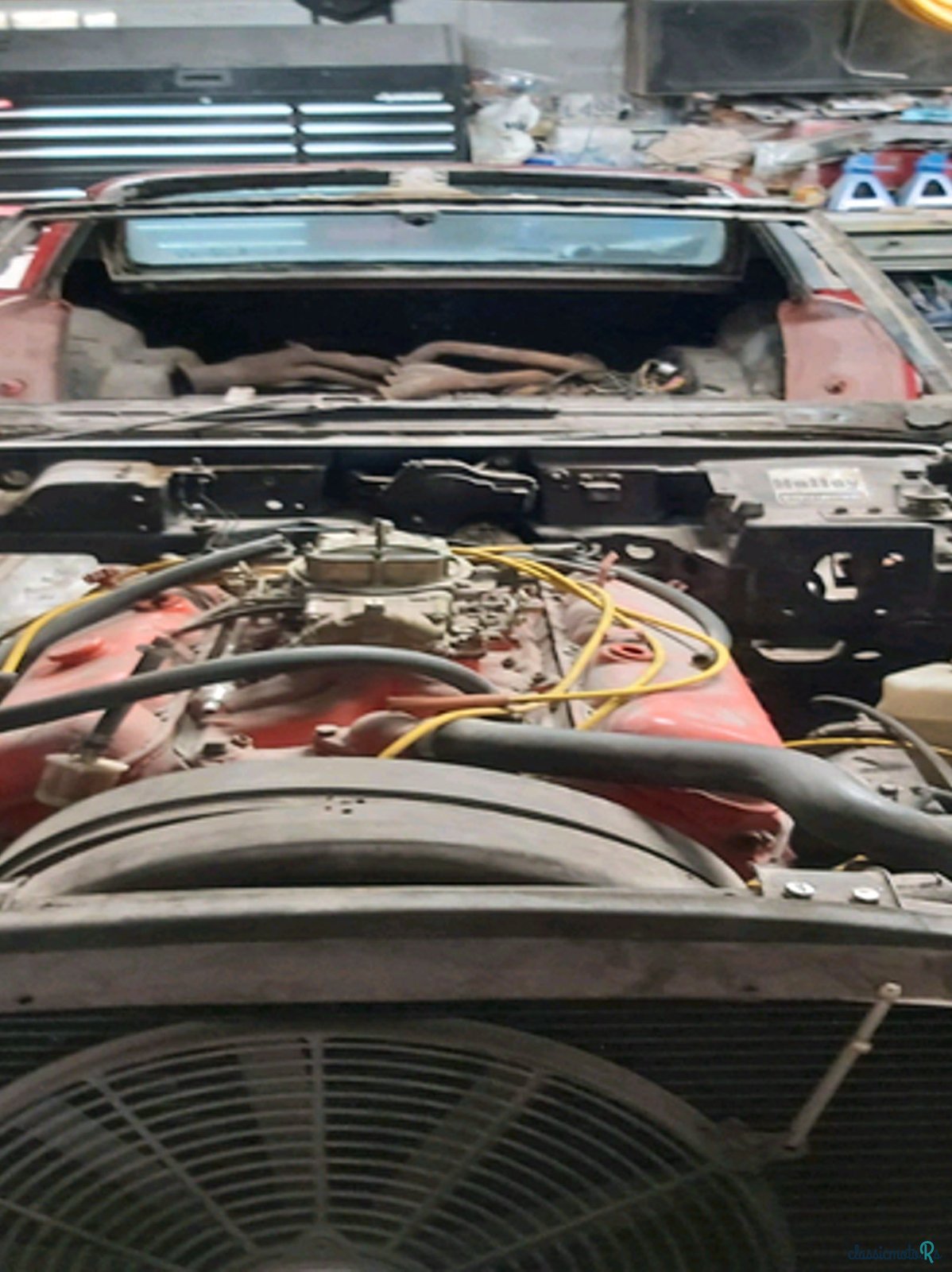
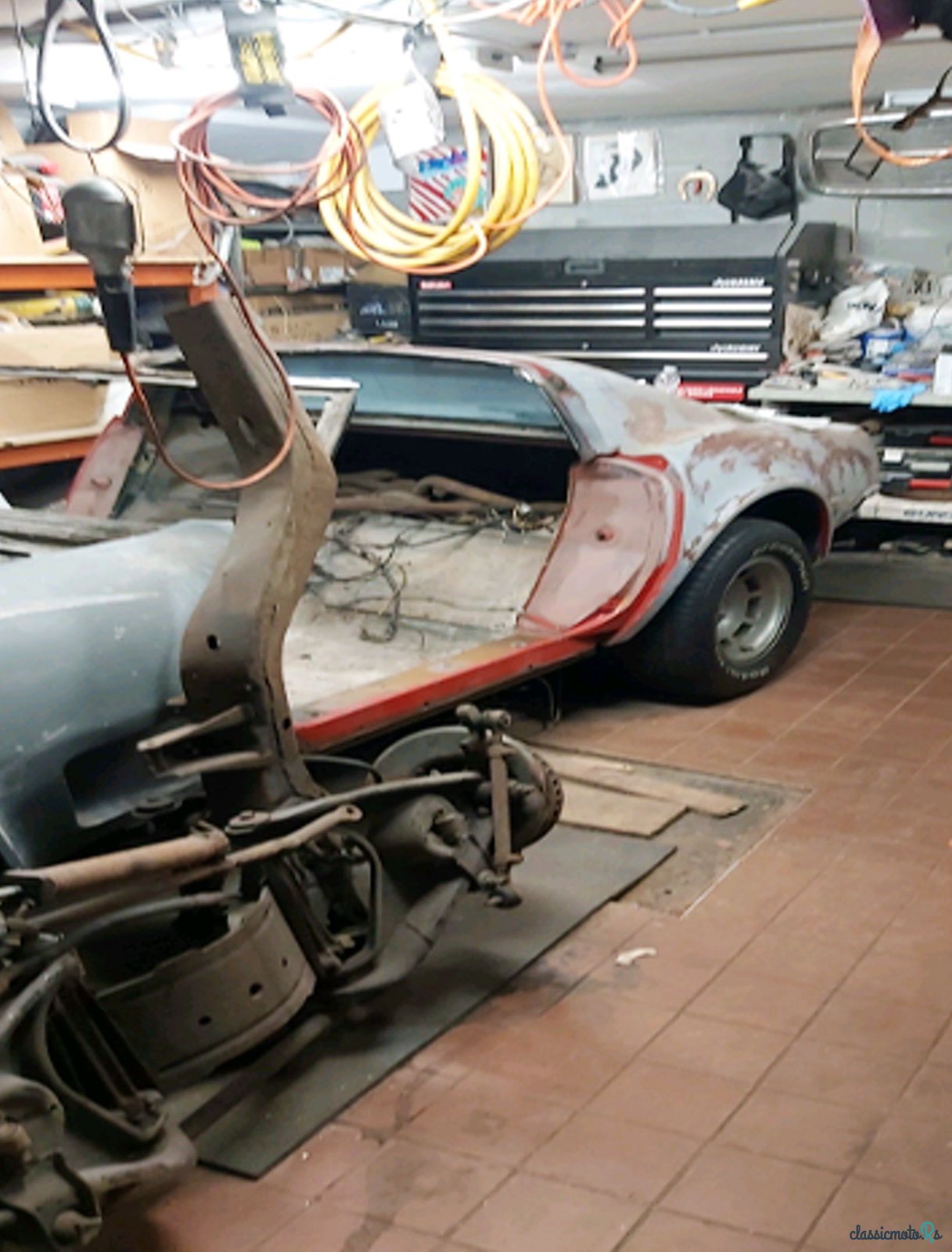
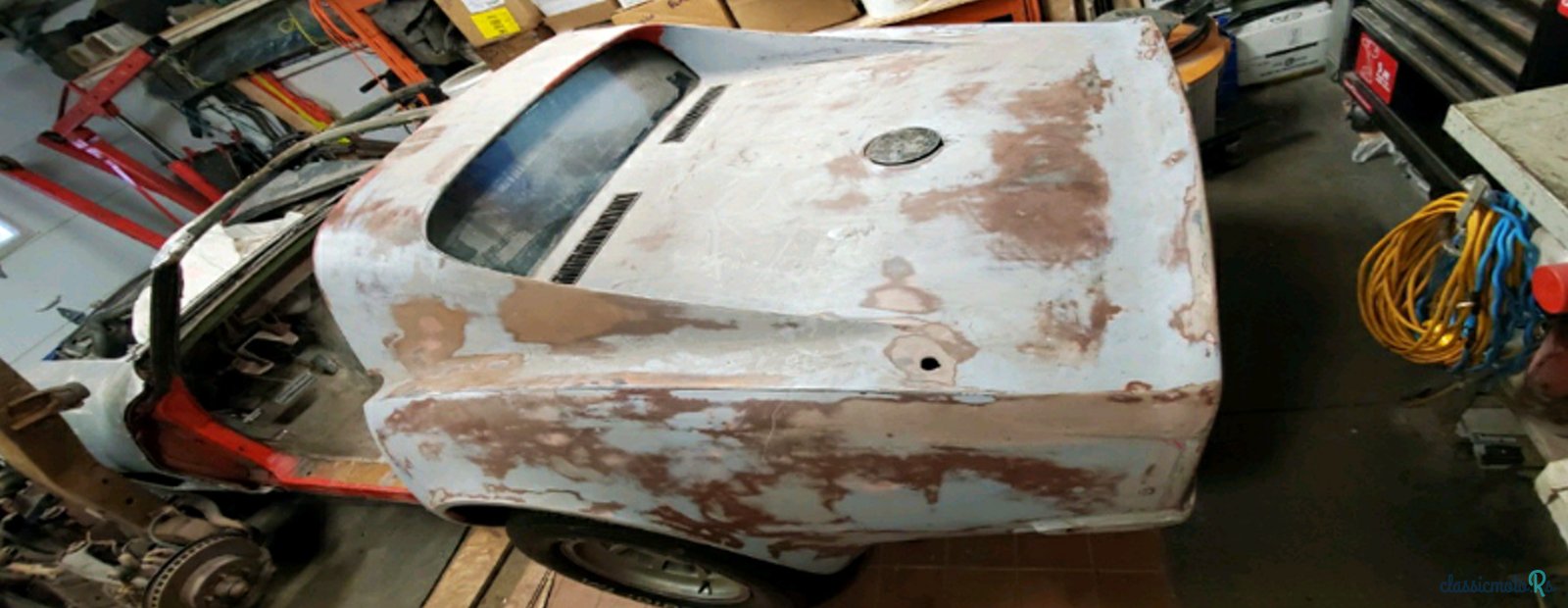
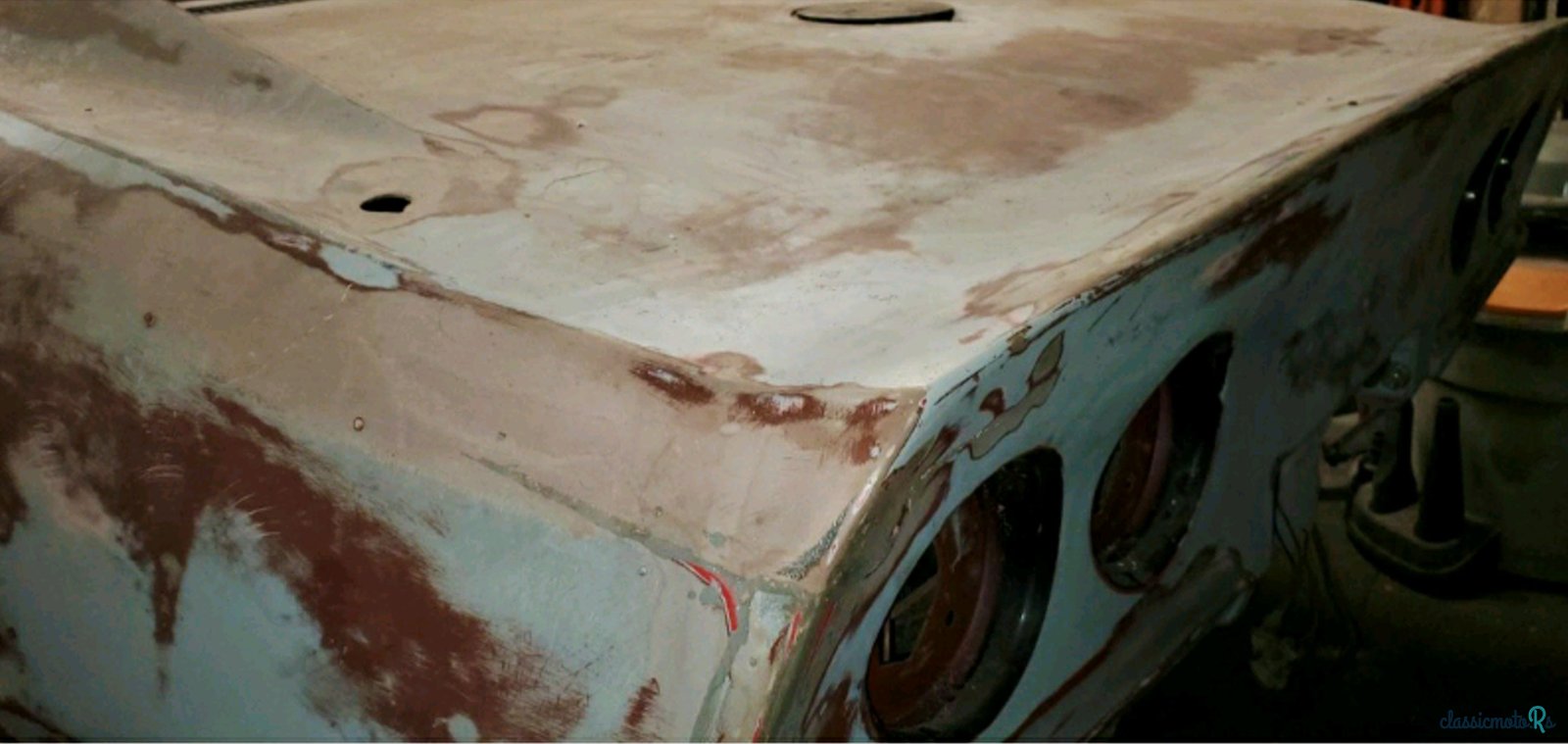
6 photos
1973' Chevrolet Corvette Stingray
Report This Ad!Rate This!Bookmark This
£4,338Published 20 December 2021ID: QF05bN
Expired
4 years ago
4 years ago
Information from the owner
Body: Coupe
Age: 48 years
Exterior color: White
Electronics: Alarm, Bluetooth
Seller's comments about 1973' Chevrolet Corvette Stingray
Are you looking for a great project , Well here it it.....
The 1973 corvette stingrays are highly sought after car. This car comes complete with a 454 big block and 400 turbo transmission. This is a non matching number engine and transmission for this car. It is a original corvette engine and transmission from another car. This is a solid car and about 95 percent complete. The original color of the car is red.
To make a appointment for a viewing please contact us at using the button below We can also arrange a zoom meeting or other online communications. This car is available for international shipping worldwide please inquire.
Here is some interesting history on the corvette stingray.
1973–1974[edit]
1973 Corvette Stingray Coupe
Model year 1973 started Corvette's transformation from muscle to touring sports car. A Chevrolet advertisement headlined: "We gave it radials, a quieter ride, guard beams and a nose job."[18] Indeed, redesigned body mounts and radial tires did improve Corvette's ride, and interior sound levels were reduced by 40%.[18] The chrome rear bumper was essentially carried over from the previous year. However, the chrome blade front bumper was dropped for the federally required 5 mph (8. 0 km/ h) standard for a light-weight front bumper system with an inner transverse tube attached to the frame with two Omark-bolts-(special steel fasteners which absorbed energy when a forming die, pushed back by the bumper, was forced down their length), and an injection-molded urethane bumper cover. The urethane nose was chosen over Chevy's other alternative, a more protruding version of the previous metal bumper. The new urethane bumper assembly added thirty-five pounds to the front end.[6] Two 350 cu in (5. 7 L) small block engines were available. The base L-48 engine produced 190 hp (142 kW). The L-82 was introduced as the optional high performance small-block engine (replacing the LT-1 engine) and delivered 250 hp (186 kW). The new hydraulic lifter motor featured a forged steel crankshaft, running in a four-bolt main block, with special rods, impact extruded pistons, a higher lift camshaft, mated to special heads with larger valves running at a higher 9:1 compression, and included finned aluminum valve covers to help dissipate heat. The L-82 was designed to come on strong at higher RPM[19] and ordered with nearly 20% of the cars at a cost of $299.[6]
Car and Driver on the L-82 in December 1972, “…when it comes to making a choice, the L82 is the engine we prefer. Duntov and the other Corvette engineers gravitate toward the big blocks because they like the torque. And granted, the 454s will squirt through traffic with just a feather touch on the gas pedal. But, to us at least, the small block engine contributes to a fine sense of balance in the Corvette that is rare in any GT car, so rare that it would be a shame to exchange it for a few lb.-ft. of torque.”[20]
The 454 cu in (7. 4 L) LS-4 big-block V8 engine was offered delivering 275 hp (205 kW) and 15% of the cars were ordered so equipped. “454” emblems adorned the hood of big-block equipped Corvettes. All models featured a new cowl induction domed hood, which pulled air in through a rear hood intake into the engine compartment under full throttle, increasing power (but didn't show up in the horsepower ratings). 0-60 mph times were reduced by a second while keeping the engine compartment cooler. The new tire size was GR70-15 with white stripes or raised white letters optional.[6] An aluminum wheel option was seen on 1973 and 1974 pilot cars, and a few 1973s were so equipped, but withheld for quality issues, and wouldn't be available until 1976.
Road & Track magazine stated in a 1973 road test: "For all its age, size and compromises, if the Corvette is equipped with the right options it is a pleasant and rewarding car to drive and this 1973 example was one of the best Corvettes we've ever driven." It was also the year for the first Off Road Suspension RPO Z07 produced and today it is considered a very rare production Corvette as only 45 were produced.
1974 Corvette Stingray Coupe Rear
1974 Corvette Stingray Coupe front
For 1974, a new rear bumper system replaced the squared tail and chrome rear bumper blades introduced in 1967 with a trim, tapering urethane cover carrying an integral license plate holder and recesses for the trademark round taillights. Underneath sat a box-section aluminum impact bar on two Omark-bolt slider brackets similar to the system used in the nose which allowed the Corvette to pass federal five-mph impact tests at the rear as well as the front. The new rear design was more up-to-date than the 60's shape that it replaced with the vast majority of enthusiasts embracing the new design. For the 1974 model only, casting limitations mandated left and right bumper covers with a vertical center seam. The anti-theft alarm key activator was moved from the rear panel to the front left fender. Tailpipes were now turned down as the new bumper cover eliminated the tailpipe extensions.
Car and Driver magazine said: "... We think the front and rear together produce a 'molded' shape that speaks of function rather than decor." Chevrolet commented on the new tailpiece in the '74 Corvette sales brochure: “Take the styling. We wouldn’t just change it for the sake of change. But when we made the rear bumper stronger, we made Corvette’s rear styling look different. And, we think better...”[21]
A 1974 Stingray equipped with the L48 195 hp (145 kW) small-block was capable of 0-60 mph in 6. 8 seconds;[22] comparable to the 6. 5 second time of the 1968 small-block rated at 300 hp (224 kW); proof the 1972-74 Corvette engines had ample power regardless of reduced horsepower and net (bhp) ratings.[23] The L-82 engine remained at 250 hp (186 kW) and the 454 cu in (7. 4 L) LS4 dropped slightly to 270 hp (201 kW).
Hi-Performance Cars magazine in a L48, L82, and LS4 comparison test, September 1973, said: "Our choice for the all-around best performer must go to the base 350 L48 engine... The L48 delivers all the acceleration you'll ever need on the road in a steady, forceful manner... in addition it runs cool, idles smoothly, and can cruise all day at 100 mph (160 km/ h). The L48 took 6. 8 seconds to reach 60 mph (97 km/ h), the L82, 6. 7 seconds and the LS4 454, 6. 4 seconds. On the Bridgehampton road course and over the ride and handling course at Suffolk County Raceway, the base L48 coupe was again our choice... the L-82 had the same balance as the L48 but if we weren't at the right rpm through a corner, or in the wrong gear, the (L82's) lack of torque made itself felt once again... the L48 was the best balanced of the three." In conclusion, they stated: "The Corvette as a total concept has always been far more than the sum of its individual parts. The fanatical clientele that buys 30, 000 of them a year can attest to that. And we'll attest to the fact that after 20 years, the Corvette is more than going strong. It's still the epitome of the American motoring experience." [22]
Resonators were added to the dual exhaust system on 1974 models which further helped quiet the interior. The radiator and shroud were revised for better low-speed cooling. The inside rear-view mirror width was increased from 8 inches (200 mm) to 10 inches (250 mm). For the first time, lap and shoulder seat belts were integrated, but only in coupes. The FE7 Gymkhana "off-road" suspension included stiffer springs and a stiffer front stabilizer bar with no ordering restrictions. The new $7 FE7 suspension option was included with the Z07 package — The $400 package (also included H. D. power brakes) was available for L82 and LS4 cars with M21 transmission.[24] 1974 was the end of an era for the Corvette with the last true dual exhaust systems, the last without a catalytic converter and the last use of the 454 cu in (7. 4 L) big block engine.
Hot Rod magazine in its March 1986 issue selected the 1973-74 Corvette LS4 454 as one of the "10 most collectable muscle cars" in the company of the 1968-70 Chevelle, 1970 'Cuda, 1970 Challenger, 1966-67 Fairlane, 1968-70 AMX, 1970 Camaro Z28, 1968-70 GTO, 1968–69 Charger, and 1967-68 Mustang. The big-block Corvettes were the only muscle cars produced after 1970 worthy of the list.[25]
The 1973 corvette stingrays are highly sought after car. This car comes complete with a 454 big block and 400 turbo transmission. This is a non matching number engine and transmission for this car. It is a original corvette engine and transmission from another car. This is a solid car and about 95 percent complete. The original color of the car is red.
To make a appointment for a viewing please contact us at using the button below We can also arrange a zoom meeting or other online communications. This car is available for international shipping worldwide please inquire.
Here is some interesting history on the corvette stingray.
1973–1974[edit]
1973 Corvette Stingray Coupe
Model year 1973 started Corvette's transformation from muscle to touring sports car. A Chevrolet advertisement headlined: "We gave it radials, a quieter ride, guard beams and a nose job."[18] Indeed, redesigned body mounts and radial tires did improve Corvette's ride, and interior sound levels were reduced by 40%.[18] The chrome rear bumper was essentially carried over from the previous year. However, the chrome blade front bumper was dropped for the federally required 5 mph (8. 0 km/ h) standard for a light-weight front bumper system with an inner transverse tube attached to the frame with two Omark-bolts-(special steel fasteners which absorbed energy when a forming die, pushed back by the bumper, was forced down their length), and an injection-molded urethane bumper cover. The urethane nose was chosen over Chevy's other alternative, a more protruding version of the previous metal bumper. The new urethane bumper assembly added thirty-five pounds to the front end.[6] Two 350 cu in (5. 7 L) small block engines were available. The base L-48 engine produced 190 hp (142 kW). The L-82 was introduced as the optional high performance small-block engine (replacing the LT-1 engine) and delivered 250 hp (186 kW). The new hydraulic lifter motor featured a forged steel crankshaft, running in a four-bolt main block, with special rods, impact extruded pistons, a higher lift camshaft, mated to special heads with larger valves running at a higher 9:1 compression, and included finned aluminum valve covers to help dissipate heat. The L-82 was designed to come on strong at higher RPM[19] and ordered with nearly 20% of the cars at a cost of $299.[6]
Car and Driver on the L-82 in December 1972, “…when it comes to making a choice, the L82 is the engine we prefer. Duntov and the other Corvette engineers gravitate toward the big blocks because they like the torque. And granted, the 454s will squirt through traffic with just a feather touch on the gas pedal. But, to us at least, the small block engine contributes to a fine sense of balance in the Corvette that is rare in any GT car, so rare that it would be a shame to exchange it for a few lb.-ft. of torque.”[20]
The 454 cu in (7. 4 L) LS-4 big-block V8 engine was offered delivering 275 hp (205 kW) and 15% of the cars were ordered so equipped. “454” emblems adorned the hood of big-block equipped Corvettes. All models featured a new cowl induction domed hood, which pulled air in through a rear hood intake into the engine compartment under full throttle, increasing power (but didn't show up in the horsepower ratings). 0-60 mph times were reduced by a second while keeping the engine compartment cooler. The new tire size was GR70-15 with white stripes or raised white letters optional.[6] An aluminum wheel option was seen on 1973 and 1974 pilot cars, and a few 1973s were so equipped, but withheld for quality issues, and wouldn't be available until 1976.
Road & Track magazine stated in a 1973 road test: "For all its age, size and compromises, if the Corvette is equipped with the right options it is a pleasant and rewarding car to drive and this 1973 example was one of the best Corvettes we've ever driven." It was also the year for the first Off Road Suspension RPO Z07 produced and today it is considered a very rare production Corvette as only 45 were produced.
1974 Corvette Stingray Coupe Rear
1974 Corvette Stingray Coupe front
For 1974, a new rear bumper system replaced the squared tail and chrome rear bumper blades introduced in 1967 with a trim, tapering urethane cover carrying an integral license plate holder and recesses for the trademark round taillights. Underneath sat a box-section aluminum impact bar on two Omark-bolt slider brackets similar to the system used in the nose which allowed the Corvette to pass federal five-mph impact tests at the rear as well as the front. The new rear design was more up-to-date than the 60's shape that it replaced with the vast majority of enthusiasts embracing the new design. For the 1974 model only, casting limitations mandated left and right bumper covers with a vertical center seam. The anti-theft alarm key activator was moved from the rear panel to the front left fender. Tailpipes were now turned down as the new bumper cover eliminated the tailpipe extensions.
Car and Driver magazine said: "... We think the front and rear together produce a 'molded' shape that speaks of function rather than decor." Chevrolet commented on the new tailpiece in the '74 Corvette sales brochure: “Take the styling. We wouldn’t just change it for the sake of change. But when we made the rear bumper stronger, we made Corvette’s rear styling look different. And, we think better...”[21]
A 1974 Stingray equipped with the L48 195 hp (145 kW) small-block was capable of 0-60 mph in 6. 8 seconds;[22] comparable to the 6. 5 second time of the 1968 small-block rated at 300 hp (224 kW); proof the 1972-74 Corvette engines had ample power regardless of reduced horsepower and net (bhp) ratings.[23] The L-82 engine remained at 250 hp (186 kW) and the 454 cu in (7. 4 L) LS4 dropped slightly to 270 hp (201 kW).
Hi-Performance Cars magazine in a L48, L82, and LS4 comparison test, September 1973, said: "Our choice for the all-around best performer must go to the base 350 L48 engine... The L48 delivers all the acceleration you'll ever need on the road in a steady, forceful manner... in addition it runs cool, idles smoothly, and can cruise all day at 100 mph (160 km/ h). The L48 took 6. 8 seconds to reach 60 mph (97 km/ h), the L82, 6. 7 seconds and the LS4 454, 6. 4 seconds. On the Bridgehampton road course and over the ride and handling course at Suffolk County Raceway, the base L48 coupe was again our choice... the L-82 had the same balance as the L48 but if we weren't at the right rpm through a corner, or in the wrong gear, the (L82's) lack of torque made itself felt once again... the L48 was the best balanced of the three." In conclusion, they stated: "The Corvette as a total concept has always been far more than the sum of its individual parts. The fanatical clientele that buys 30, 000 of them a year can attest to that. And we'll attest to the fact that after 20 years, the Corvette is more than going strong. It's still the epitome of the American motoring experience." [22]
Resonators were added to the dual exhaust system on 1974 models which further helped quiet the interior. The radiator and shroud were revised for better low-speed cooling. The inside rear-view mirror width was increased from 8 inches (200 mm) to 10 inches (250 mm). For the first time, lap and shoulder seat belts were integrated, but only in coupes. The FE7 Gymkhana "off-road" suspension included stiffer springs and a stiffer front stabilizer bar with no ordering restrictions. The new $7 FE7 suspension option was included with the Z07 package — The $400 package (also included H. D. power brakes) was available for L82 and LS4 cars with M21 transmission.[24] 1974 was the end of an era for the Corvette with the last true dual exhaust systems, the last without a catalytic converter and the last use of the 454 cu in (7. 4 L) big block engine.
Hot Rod magazine in its March 1986 issue selected the 1973-74 Corvette LS4 454 as one of the "10 most collectable muscle cars" in the company of the 1968-70 Chevelle, 1970 'Cuda, 1970 Challenger, 1966-67 Fairlane, 1968-70 AMX, 1970 Camaro Z28, 1968-70 GTO, 1968–69 Charger, and 1967-68 Mustang. The big-block Corvettes were the only muscle cars produced after 1970 worthy of the list.[25]



